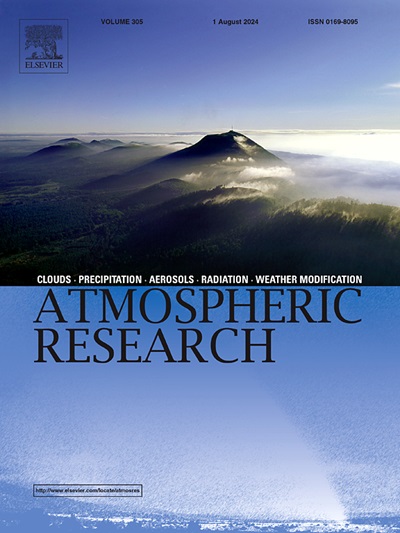Influence of the Summer North Pacific Victoria Mode on Autumn Rainfall over the Greater Mekong Subregion
IF 4.5
2区 地球科学
Q1 METEOROLOGY & ATMOSPHERIC SCIENCES
引用次数: 0
Abstract
This study investigates the influence of the summer Victoria Mode (VM) in the North Pacific on autumn precipitation over the Greater Mekong Subregion (GMS) between 1980 and 2010. The results show a statistically significant negative correlation between the summer VM (June–August: JJA) and autumn rainfall (August–October: ASO) in the GMS, which is independent of the effects of the El Niño-Southern Oscillation (ENSO) from the preceding winter. The positive phase of the summer VM leads to reduced autumn rainfall in key areas such as Yunnan Province, southern Myanmar, western and central Thailand, and central and southern Cambodia. Here we explored the dynamic mechanisms that link the summer VM to GMS rainfall, and identified three primary pathways: (1) the modulation of sea surface temperature (SST) anomalies and the development of a cyclonic circulation over the South China Sea, which reduces moisture transport to the GMS; (2) induced low-level divergence over the GMS, which suppresses ascending air motion; and (3) the propagation of a Rossby wave train that influences geopotential height anomalies and upper-level convergence around the GMS. These findings enhance our understanding of extratropical influences on autumn precipitation in the GMS and suggest that the summer VM could serve as a valuable predictor for seasonal rainfall forecasts, thereby assisting disaster prevention and mitigation efforts.
夏季北太平洋维多利亚模态对大湄公河次区域秋季降水的影响
研究了1980 - 2010年北太平洋夏季维多利亚模式(VM)对大湄公河次区域(GMS)秋季降水的影响。结果表明,GMS夏季VM(6 ~ 8月:JJA)与秋季降水(8 ~ 10月:ASO)呈显著负相关,且与前冬季El Niño-Southern涛动(ENSO)的影响无关。夏季VM的正相位导致云南省、缅甸南部、泰国西部和中部以及柬埔寨中部和南部等重点地区的秋季降雨量减少。本文探讨了夏季VM与GMS降水之间的动力机制,并确定了三个主要途径:(1)海面温度异常的调制和南海气旋环流的发展,减少了水汽向GMS的输送;(2)诱导GMS低空辐散,抑制上升气流运动;(3)影响GMS周围位势高度异常和高层辐合的罗斯比波列的传播。这些发现增强了我们对GMS秋季降水的温带影响的理解,并表明夏季VM可以作为季节性降雨预报的有价值的预测因子,从而有助于防灾和减灾工作。
本文章由计算机程序翻译,如有差异,请以英文原文为准。
求助全文
约1分钟内获得全文
求助全文
来源期刊

Atmospheric Research
地学-气象与大气科学
CiteScore
9.40
自引率
10.90%
发文量
460
审稿时长
47 days
期刊介绍:
The journal publishes scientific papers (research papers, review articles, letters and notes) dealing with the part of the atmosphere where meteorological events occur. Attention is given to all processes extending from the earth surface to the tropopause, but special emphasis continues to be devoted to the physics of clouds, mesoscale meteorology and air pollution, i.e. atmospheric aerosols; microphysical processes; cloud dynamics and thermodynamics; numerical simulation, climatology, climate change and weather modification.
 求助内容:
求助内容: 应助结果提醒方式:
应助结果提醒方式:


